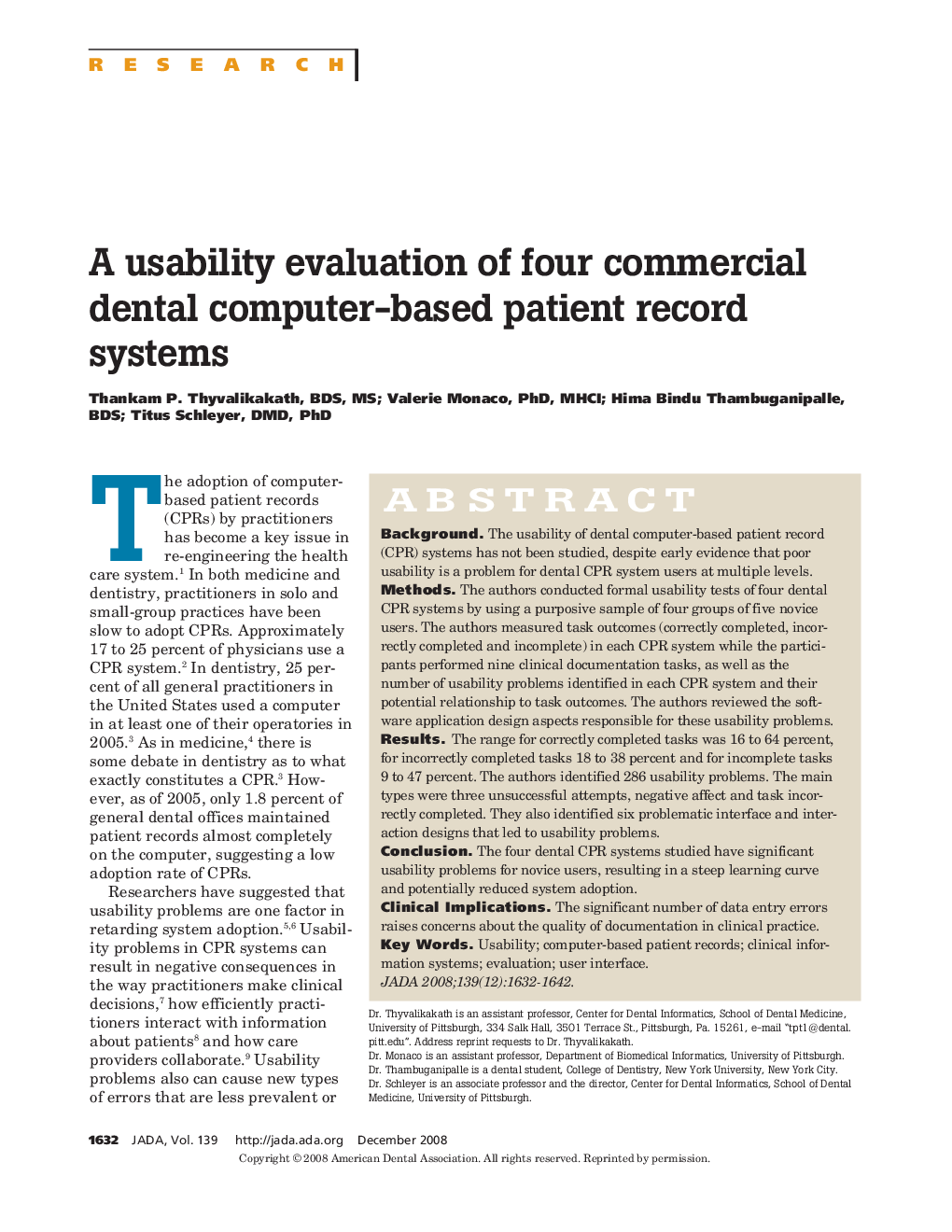| Article ID | Journal | Published Year | Pages | File Type |
|---|---|---|---|---|
| 3139078 | The Journal of the American Dental Association | 2008 | 11 Pages |
ABSTRACTBackgroundThe usability of dental computer-based patient record (CPR) systems has not been studied, despite early evidence that poor usability is a problem for dental CPR system users at multiple levels.MethodsThe authors conducted formal usability tests of four dental CPR systems by using a purposive sample of four groups of five novice users. The authors measured task outcomes (correctly completed, incorrectly completed and incomplete) in each CPR system while the participants performed nine clinical documentation tasks, as well as the number of usability problems identified in each CPR system and their potential relationship to task outcomes. The authors reviewed the software application design aspects responsible for these usability problems.ResultsThe range for correctly completed tasks was 16 to 64 percent, for incorrectly completed tasks 18 to 38 percent and for incomplete tasks 9 to 47 percent. The authors identified 286 usability problems. The main types were three unsuccessful attempts, negative affect and task incorrectly completed. They also identified six problematic interface and interaction designs that led to usability problems.ConclusionThe four dental CPR systems studied have significant usability problems for novice users, resulting in a steep learning curve and potentially reduced system adoption.Clinical ImplicationsThe significant number of data entry errors raises concerns about the quality of documentation in clinical practice.
